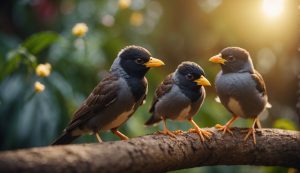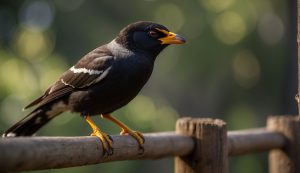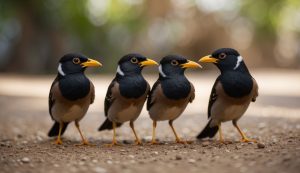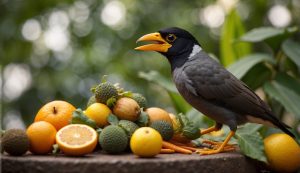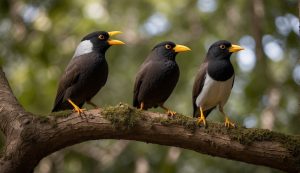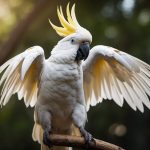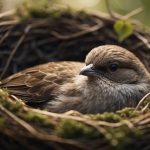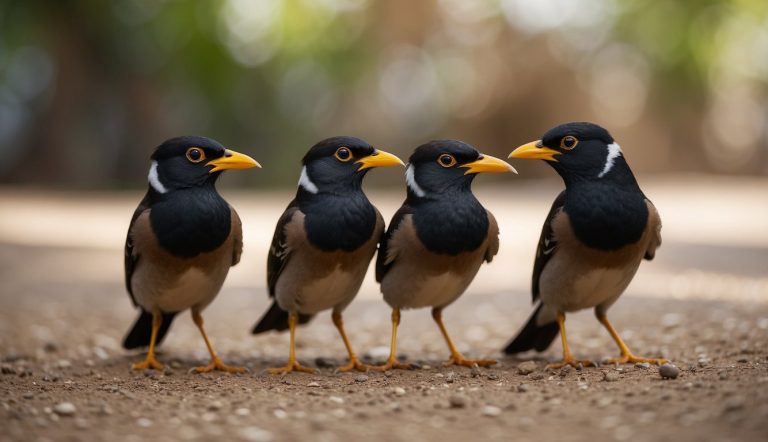Do Mynah Birds Make Good Pets? Uncovering the Joy and Challenges

Mynah birds, with their tropical origins and striking ability to mimic human speech, have garnered interest as captivating pets. Known for their sociability and intelligence, mynahs often bond well with their owners, making them a unique addition to any pet-loving household.
When considering a mynah as a pet, it’s important to understand their complex needs in terms of diet, housing, and environmental enrichment to ensure they live a happy and healthy life.
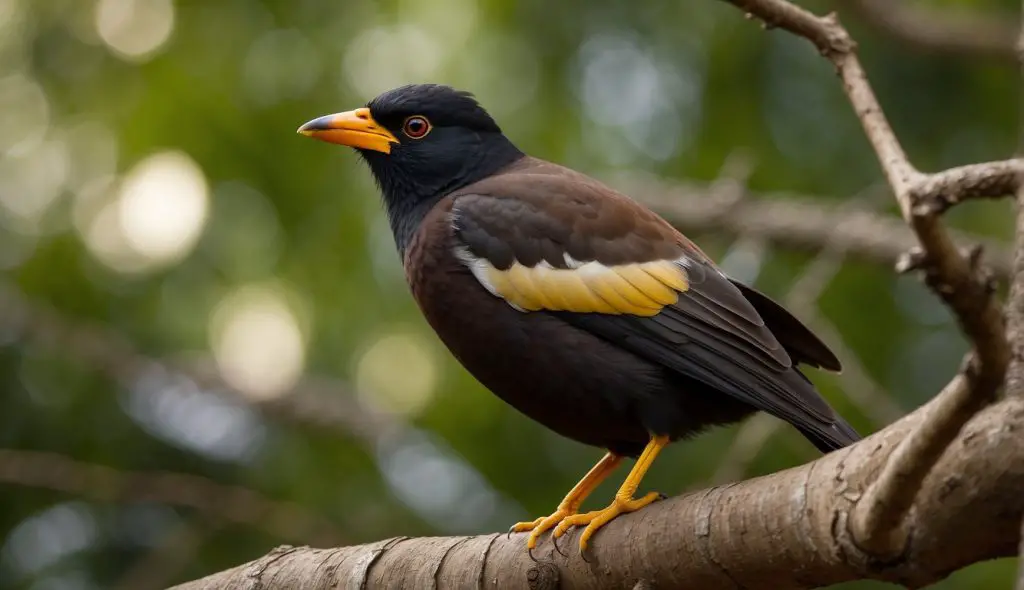
As someone who has studied mynah birds, I’ve observed that they thrive in environments that provide protection from extreme weather and that replicate their natural habitat as closely as possible.
Additionally, mynah bird owners should be prepared to address the specific dietary requirements that these birds need to avoid health issues.
Providing them with a varied and nutritionally balanced diet is crucial, as is creating an interactive and stimulating environment to foster their cognitive development and prevent boredom.
Key Points
- Mynah birds make engaging pets due to their intelligence and mimicking abilities.
- They require a specialized diet and housing that imitates their natural habitat.
- Ensuring proper health care, enrichment, and social interaction is key for a mynah’s well-being.
Table of Contents
Understanding Mynah Birds
In discussing whether mynah birds make suitable pets, it’s essential to recognize their diverse species and distinct physical traits.
Species and Distribution
Mynah birds belong to the starling family and primarily hail from Asia and the Pacific Islands. Notably prominent are the Greater Indian Hill Mynah and the Java Hill Mynah, both highly valued for their ability to mimic human speech. The Common Mynah is another species that has adapted well to urban environments.
- Greater Indian Hill Mynah: Native to South Asia, from India to Indonesia.
- Java Hill Mynah: Originates from Java and Bali in Indonesia.
- Common Mynah: Found across Asia, highly adaptable to urban areas.
Physical Characteristics
Mynah birds are recognized by their sleek black feathers, accentuated by striking yellow markings around their eyes and beaks. Their appearance is both elegant and exotic, with a robust build that reflects their wild origins.
- Appearance: Predominantly black plumage, a heavy orange-yellow bill, and bright yellow eye patches.
- Size: They can span about 23-26 cm in length, which makes them a medium-sized bird within the starling family.
Mynahs’ ability to vocalize and mimic sounds explains their popularity as pets; however, their physical and social needs are closely tied to their natural origins and must be considered by potential owners.
Housing Your Mynah Bird
When I welcome a mynah bird into my home, I understand that creating a safe and comfortable environment is critical for its well-being. The right housing not only keeps my pet secure but also plays a significant role in its mental and physical health.
Cage Essentials
Cage: Choosing a sturdy cage is the first step to housing a mynah. I go for an iron cage because it’s durable and hard to chew through. I make sure the cage bars are close enough to prevent my mynah from escaping but allow enough room for air circulation.
Perches: A variety of perch sizes is crucial, as they help my mynah exercise its feet and prevent joint issues. I include at least two perches made from different materials for this purpose.
- Appropriate Cage Size: The minimum cage size I recommend for a mynah bird would be 24 inches wide, 18 inches deep, and 24 inches high. However, bigger is always better to provide ample flying space.
Nest Box: If breeding, a safe and dark nest box is vital; for a single pet mynah, this can provide a cozy spot for solitude.
Space and Comfort
When it comes to the living space outside the cage, I ensure there’s a safe, bird-proof area where my mynah can fly and exercise under my supervision.
A large aviary is ideal if I have the space—this provides a more natural and stimulating environment where my pet can fly and stay active.
Let’s not forget the daily cleaning to maintain a hygienic space for my mynah, which is key to avoiding diseases and keeping my pet in top-notch health.
Mynah Bird Care and Diet
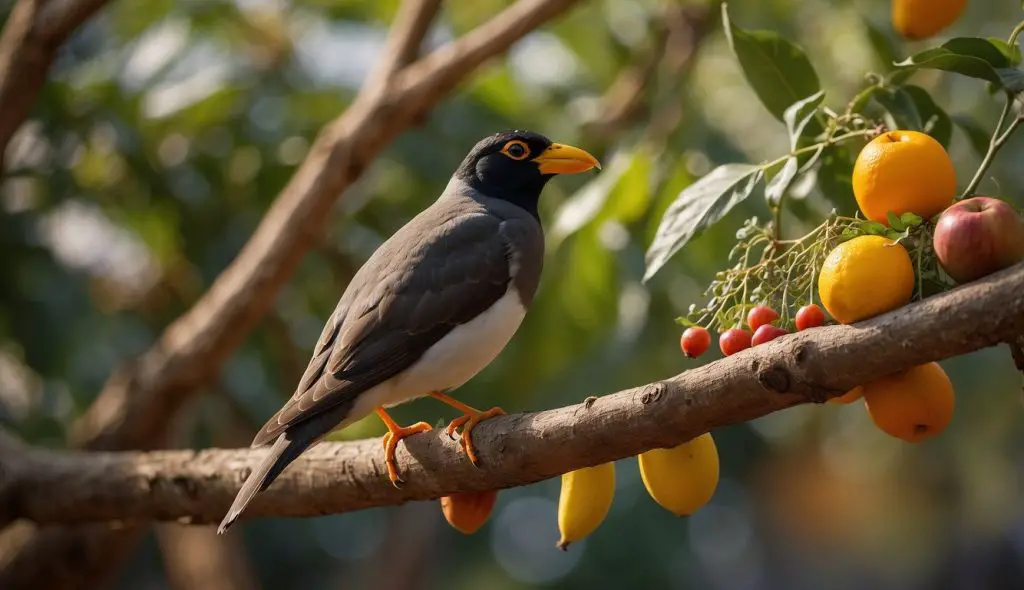
Caring for my mynah bird involves providing a balanced diet and understanding its unique feeding requirements. Below, I detail what constitutes a healthy mynah diet and some treats that can be safely given.
Feeding Habits
Mynah birds require a mix of pellets and fresh fruits and vegetables. I ensure they have a constant supply of water available. Their diet is low in iron, so I avoid foods high in this mineral. I’ve observed that my mynahs thrive on two feedings per day.
- Morning: A fresh mix of diced fruits and vegetables.
- Evening: High-quality softbill pellets to provide balanced nutrition.
It’s crucial to avoid avocados and chocolate, as these can be toxic to mynahs.
Nutrition and Treats
The nutrition of my mynah bird is primarily derived from specially formulated softbill pellets because they contain the right balance of vitamins, minerals, and the low fat content that mynahs require. Here’s how I balance their nutrition:
- Pellets: 50-70% of their daily intake.
- Fruits and Vegetables: Up to 30% – favorites include apples, grapes, and carrots.
As for treats, small pieces of cheese or hard-boiled eggs can be offered occasionally. These should constitute no more than 10% of their overall diet to avoid excessive fat intake. Always remember to provide a bowl of fresh water for my mynah bird to enjoy throughout the day.
Behavior and Enrichment
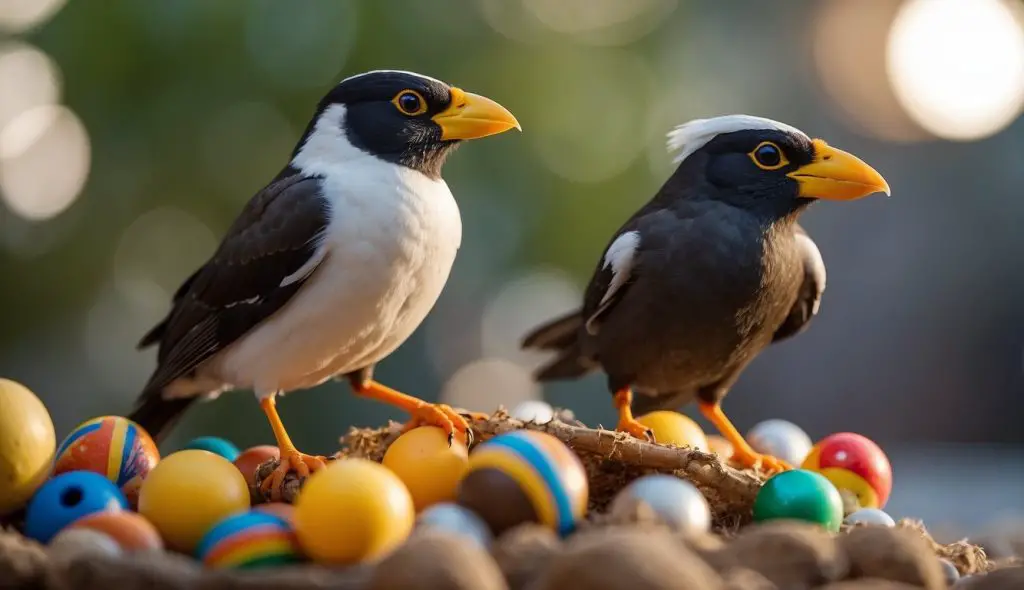
In my experience, understanding a mynah’s natural behavior and providing appropriate enrichment is crucial for their well-being.
Social Interaction
I’ve observed that mynah birds are incredibly social creatures. They require regular interaction with either their human family or another bird to remain mentally stimulated and happy.
When I engage with my mynah, it’s clear they thrive on the attention. They are known to form strong bonds and may even hop to their favorite person, eager for some playtime or a chat.
Toys and Training
Regarding toys, a variety of bird toys are imperative to keep a mynah stimulated. They enjoy toys that challenge them and often prefer those that can be manipulated or encourage foraging.
Training is another form of enrichment I highly recommend—mynahs are very trainable.
Using treats as rewards, it’s quite feasible to teach them tricks or to mimic words and sounds. Simple commands can often be picked up quickly, making training a bonding session that is as enjoyable as it is rewarding.
Health and Wellness
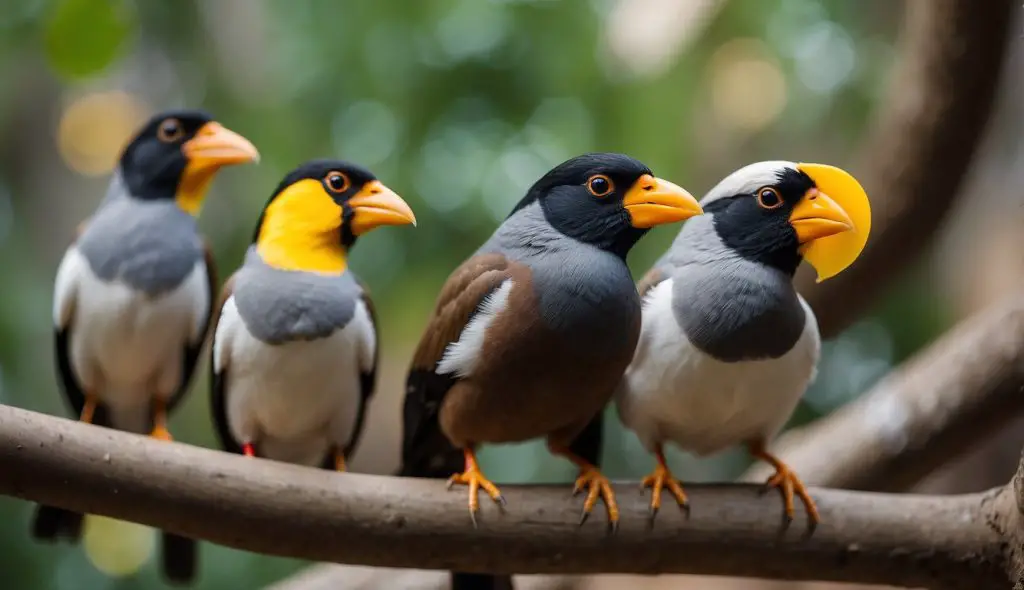
My mynah’s vibrant plumage and cheerful behavior are indicators of its health, but I know that maintaining wellness involves rigorous care and attention to its needs.
Routine Vet Visits
I ensure my mynah frequents the veterinarian as part of its preventative care routine.
Regular check-ups usually include a physical examination, which may encompass heart and respiratory rate assessments, as well as a feather and skin inspection.
Occasionally, a vet might recommend a DNA test to look for genetic conditions.
Here’s what I keep in mind for vet visits:
- Initial health assessment: As soon as my mynah became part of the family, a vet visit was scheduled.
- Frequency: At least once a year, but more often if I notice any issues.
- Vaccinations: Prompting the vet about necessary vaccinations specific to mynahs.
Signs of Ill Health
I stay observant of my mynah’s behavior and appearance for early signs of illness.
If I notice any of the following symptoms, it’s a signal to consult the vet:
- Changes in behavior: decreased singing or social interaction
- Plumage problems: dull feathers, bald patches, or excessive plucking
Additionally, practices like regular bathing help me keep my mynah’s plumage in top condition, which is not only essential for their appearance but also for their overall health.
Frequently Asked Questions

In my experience with avian pets, mynah birds are quite unique in their care requirements and abilities. Here I’ll cover some common inquiries I’ve encountered about mynah birds as pets.
What are the care requirements for a mynah bird as a pet?
Mynah birds need a spacious cage to accommodate their active nature, as well as a diet rich in fruits, vegetables, and a low-iron pelleted food to prevent hemochromatosis, a common health issue in mynahs. They also thrive on social interaction and mental stimulation.
How long can a mynah bird be expected to live in captivity?
A mynah bird in captivity, if well-cared for, can live to be around 12-25 years old. Their lifespan is significantly influenced by the quality of their diet, environment, and regular veterinary care.
Can mynah birds mimic speech, and how can they be taught?
Mynah birds are exceptional mimics. They can be taught to replicate human speech. Consistent training sessions, positive reinforcement, and a tranquil environment can aid in their ability to mimic sounds and words.
Are there special considerations for the legality of owning a mynah bird in certain areas?
Yes, there can be specific legal restrictions on keeping mynah birds as pets in various locales. This is due to their potentially invasive nature. It’s crucial to check local regulations and obtain any necessary permits before adopting a mynah bird.
What are some tips for determining the age of a mynah bird?
Determining the exact age of a mynah bird can be challenging without a known history. However, juvenile mynahs may have duller plumages, and their eyes often darken as they mature. Consulting a veterinarian or an experienced breeder can provide an educated estimation.
How much typically does a pet mynah bird cost?
The cost of a mynah bird can vary widely. It depends on the species, age, and where you purchase it. Typically, prices can range from $500 to several thousand dollars. This does not include the ongoing expenses for their care.

